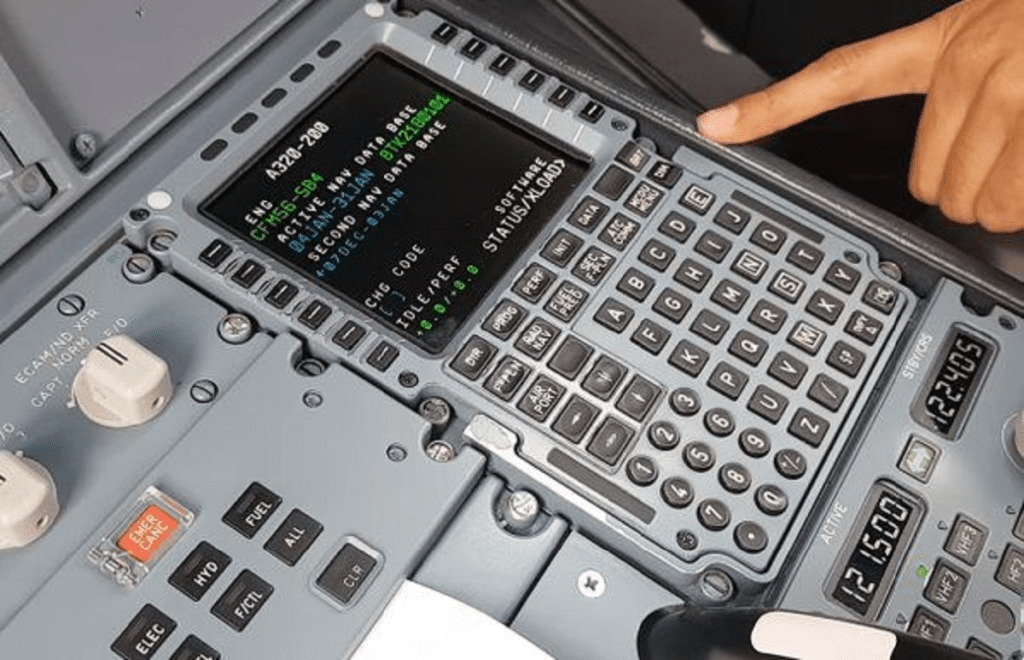
In the Airbus A320, pilots adhere to a mnemonic known as “DIFSRIPP” to systematically set up the Flight Management and Guidance Computer (FMGC) for navigation and input the performance parameters required for takeoff.
D – Database Check: On the Data page, we initiate the setup by accessing the aircraft status subpage. Here, we verify critical details like aircraft and engine type and, most notably, ensure the currency and accuracy of the navigation database by checking the date.

I – Initialization (A Page): Moving on to the Init A page, we start crafting the flight plan. Here, we input departure and arrival airports, alternate aerodrome, flight number, cost index, cruise flight level, and the temperature at that altitude.
F – Flight Planning: On the Flight Plan page, we construct our flight route. We select the departure runway, applicable Standard Instrument Departure (SID), airways, and the route to the destination. Often, we include expected arrival and runway information, though this can change.
S – Secondary Flight Plan: The configuration of the secondary flight plan varies by airline. Typically, we prepare an alternate airport route in the secondary plan, saving it in the flight management system. This allows for quick activation in case of a diversion. We also copy the current flight plan to the secondary, facilitating a return to the departure aerodrome if needed shortly after takeoff.

R – Radio Navigation: The Radio Navigation page is used to manually tune a navigation aid’s frequency, typically a VOR, for departure. By locking in the primary VOR of the departure aerodrome, the aircraft remains focused on it until deselected, disregarding other nearby VORs.
I – Initialization (B Page): On the Init B page, which is the second part of the Initialization section, we input essential data concerning aircraft weights and fuel quantities.
P – Performance Data: The Performance page is where we enter critical information such as V-speeds, flap configurations, stabilizer trim settings, and the altitudes for thrust reduction and acceleration.
P – Progress Monitoring: The Progress page primarily displays departure runway or VOR information, providing bearing and distance data. Additionally, it offers insights into cruise levels, optimum altitudes, and recommended maximum altitudes, which are automatically calculated by the FMGC.
By following these steps discreetly, pilots ensure a systematic and accurate setup of the FMGC for a safe and efficient flight.
Author – Nischal Paudel
Pilot






